It’s been about two months since I flew from New York to Japan. I remember being nervous about passing through security at JFK. Not because I was up to some mischief, of course; I was incredibly nervous about living in Japan. Not only would moving there mean my first time living abroad, but it would mark my first time living on my own, period. Add a foreign language to the mix that I (kind of) knew, and I was chock full of doubt. Despite all that, I did go through security and got on the plane.

The JET Tokyo Orientation was nice: just a small bunch of us Group C ALTs (assistant language teachers). The nerves came back as orientation came to an end, though. After all, orientation had a schedule to it, with things paid for and taken care of on your behalf. The real world loomed beyond it, and I didn’t feel fully prepared. Then again, I’m never as fully prepared for anything as I’d like to be, so the feeling was familiar. And now look! Two months have flown right on by. I’ve managed to survive so far, so things must not be all that bad. But, what exactly is it like living in Japan? There have been plenty of good and bad days, as well as a number of surprising moments. Here are some of the many different experiences I’ve had so far.
The “Good”
My co-workers are friendly
Meeting new people is always stressful. It’s probably one of the things I hate doing the most. Do they genuinely like me, or are they just being polite? I always doubt the former and lean towards the latter. So, ramp that up with the addition of a language barrier, and my nerves are ready to explode from the anxiety. I remember frantically repeating my self-introduction over and over in my head, only to have the principal mention a number of the things I was going to say both to the staff and the student body during my welcome assembly. That led to more stress trying to quickly think of new things to say, and I was left feeling unsure about how it went.
Despite my worries, everyone seemed happy to have me there. I was greeted with paper flowers on my shoe cubby and my desk drawer (which I’ve still kept up). The atmosphere in the staff room is always a friendly one. There’s always time for a laugh, which is more likely than not instigated by the always-amusing vice-principal. With all the pressure I put on myself, it’s nice to know that my work environment is rather laid-back.
The students are fun
My first impression of the kids at my school was that they were quiet. My predecessor had mentioned that in my welcome packet, and I had no reason to believe otherwise. However, I think they’re starting to warm up to me. The English teachers at my school said the first years are the most genki (“spirited” or “energetic”), but it was actually the third years that tried talking with me outside of class first.
Now, I’m greeted every morning by two students from one of the third year classes. I also started eating lunch with them, and it seems like they’re less shy about saying “hello” to me in the hall or before or after school. They can still be pretty quiet during lunch, though. There are some students who can be a little too “genki” during class, but for the most part, they’re a good bunch of kids. So far, I’ve learned that a lot of them like ONE OK ROCK, and there’s a bit of an unofficial Love Live! fan club made up of some of the guys (not sure about any of the girls). The elementary school kids are even more energetic and fun. I’m quite pleased with the schools I’ve been placed in.

Pretty good public transportation
Since I lived in New York my whole life before coming to Japan, I never saw the need to get a license. If I wanted to go somewhere, I had three options: walk, take the bus and/or train, or ask someone (usually one of my parents) for a ride. Word on the street is that a lot of JETs end up in the inaka (“rural area”). I don’t have any statistics regarding that, so I can’t confirm or deny it. I was, however, a little worried about the prospect of needing a car, especially after one of my interviewers casually mentioned just getting my license here. (Learning to drive in a country that drives on the other side of the road? With a language barrier? Yeah, sure. Easy. Nothing to worry about.)
Thankfully, I ended up in Sendai, the largest city in the Tohoku region. Even though I don’t live in the downtown area, it’s less than 15 minutes for me to walk to a train station. There are also two rechargeable fare cards available for use: Suica for the JR train line, and icsca for the Namboku and Tozai train lines. Both can be used on the city buses, too. You can even earn points when you use the cards and exchange them for fare that’s added onto your cards. That’s definitely something Sendai has over New York’s public transit system. Two downsides: no free transfers, and the buses come one every 20-30 minutes rather than 5 to 10.
Teaching can be fun (if you help make it so)
I was told early on that when you’re placed in a junior high or elementary school, you’re basically the most reliable English pronunciation program (take that, Google Translate!), while being placed in a high school means more of a leadership role in the classroom. That’s been pretty true so far; I spend most of my classroom time saying things in English for them to listen to and, at some point, repeat. I did get free-reign over one class, though: my self-introduction lesson.
After thinking it over for a while, I decided to set up a betting game. Each class was split into groups of four. I gave a PowerPoint presentation about myself, and asked them different questions. Basically, they had to guess information about me and bet money on those guesses. They started out with $500 and could bet 1/2 of their money at most for each question. They didn’t quite get it at first, but after the first question, they got more into it. By the middle of the game, they would cheer or groan loudly if they won or lost. It felt great seeing them have fun using English. I tried to set up a Halloween game using my English board (located in the hallway), but only one class has participated. It’s a little discouraging, but I’m already thinking of how to improve my approach for November’s English board display.
The food is good and inexpensive
I love Japanese food. Ever since I had my family try it with me a few years ago, we’ve made it a habit to frequent our local Japanese restaurant almost every Saturday. The food was the thing I was least worried about when it came to moving to Japan. At school, all of the teachers eat the school lunch that the students eat, and it costs about 250 yen per meal. Now, I certainly didn’t expect it to be chicken teriyaki and a wide array of sushi. Still, the meals have been pretty tasty for the most part. At this point, I have my favorites (and not-so-favorites), though I’ve already noticed that new things pop up due to the arrival of the fall season.
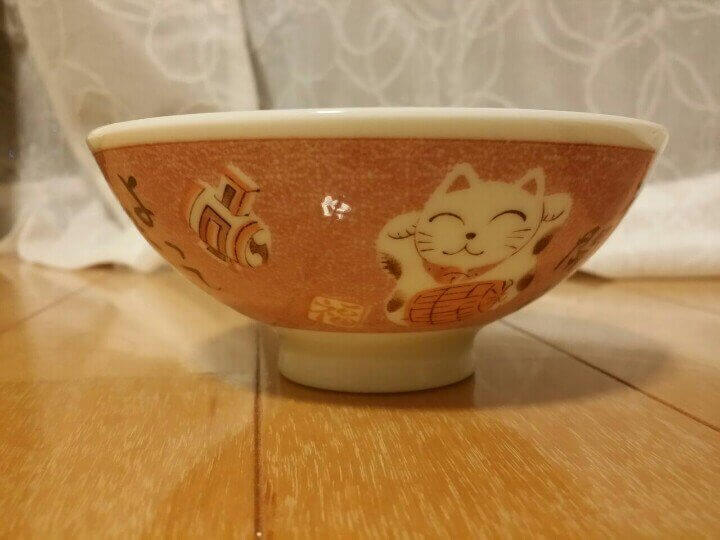
100 Yen Stores are a god-send
I’m not exaggerating. I was totally floored by what’s for sale in 100 yen stores. Going to the nearest Daiso made my frugal, finance-worrying self exceedingly happy. There are a ton of cute things! Plus, you can get a lot of home goods there, from kitchen tools to cleaning supplies. Dollar stores back in America aren’t really known for their quality. I may have become a little spoiled by these glorious bastions of thrift.
The postal system is even more convenient than America’s
In the US, if you miss a package delivery, what do you do? You could go to the post office and pick it up, but it closes at 5pm, when most people get out of work. You could go to their site and schedule a redelivery. However, you have no idea what time they’ll show up (though it’s probably about the same time as the first attempt). In Japan, you’ll get a long slip of paper in your mailbox. You can either call their phone number to schedule a redelivery or go online and fill out a form. You can, of course, pick it up at the indicated post office. What makes their system better? Not only can you schedule weekend deliveries, but you get to choose the window of time they redeliver your package. No more guesswork. It’s just…so wonderful.
Paying bills is super easy
In Japan, you get a slip of paper before you receive your bill. It kind of acts like a warning: “Your bill will cost this much.” Then, maybe a few weeks later, your bill comes in the mail. If it has a barcode on it, you can just take it to the closest convenience store and pay it there. My gas bill, however, lacks one, so I just pop over the post office near my school and pay there. If you really want, you could also just have the payments automatically deducted from your bank account. It’s as simple as that.
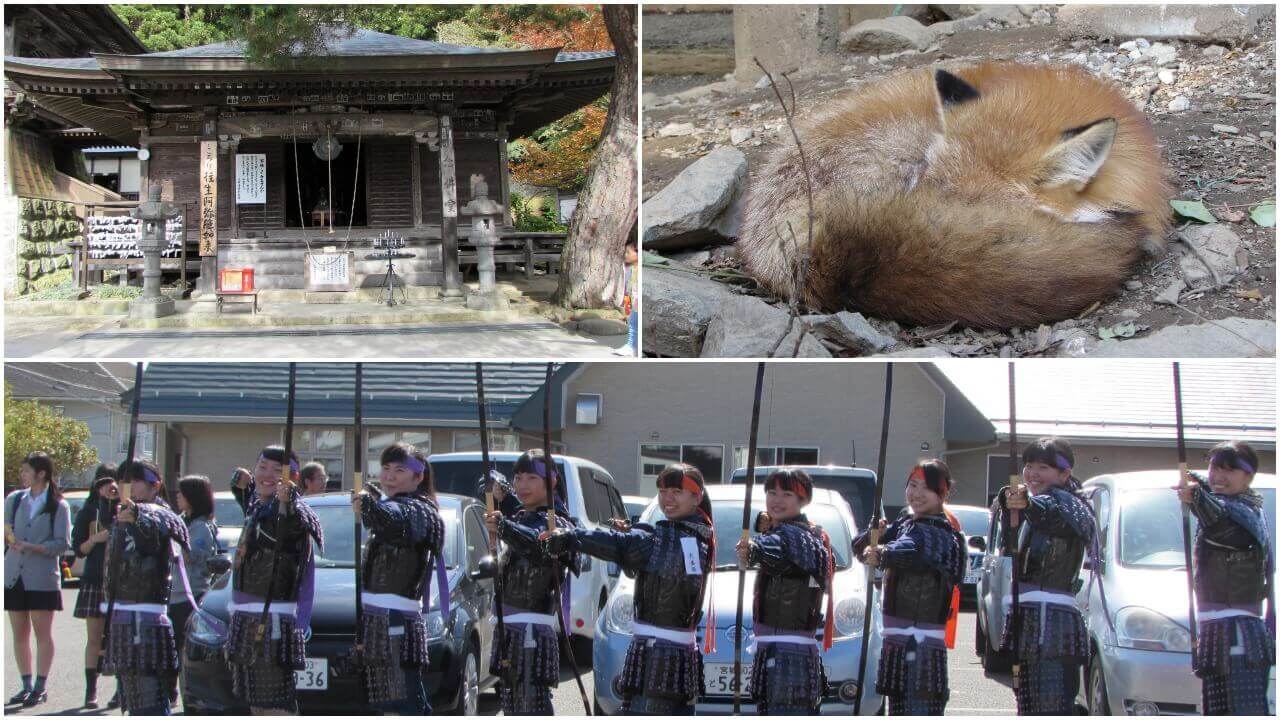
Always plenty of stuff to do
I feel quite lucky to be in Sendai. There’s easy access to a number of cool parts of Japan from here, and there’s always something going on, whether you stay in the city or venture out to other towns. I haven’t gone on too many adventures (heck, I feel like I’m still settling in), but I’ve really enjoyed the ones I’ve been on so far. From visiting the Miyagi Zao fox village to climbing a 1,000 step temple in Yamadera, it’s pretty hard to be bored around here. Traveling is a top priority while I’m here, and so far I’m pretty darn satisfied.
The “Bad”
My insane lack of speaking skills (or Japanese skills in general)
I wrote an entire article on my frustrations learning Japanese, so I’ll be brief. I’ve been studying Japanese since college, and though my listening skills are my worst, I thought that I could at least communicate pretty well. It turns out that flashcards alone don’t help build your vocabulary, though. I only really had experience pulling information out of my head for testing English to Japanese (and vice versa) definitions, not for use in conversation. This caught me off guard when I came here, and it’s been a sore spot ever since. This isn’t something “bad” about Japan, but a bad experience I keep bumping into.
Difficulties with lack of communication
This one is kind of a two-way street. As mentioned, I hate that my Japanese communication skills are lackluster. However, I’m also frustrated sometimes by the lack of communication there is between myself and the other English teachers. Maybe it’s because they know I know some Japanese, but they don’t always tell me what’s going on. Just the other week, it turned out that there was a small sports festival for the school outside. Thankfully, the accountant told me as people were leaving for the field, or else I would have just sat at my desk, oblivious. The desire to close the gap in communication helps keep me motivated to study, but I wish I knew a polite enough way to ask about things. I guess it’s just a matter of swallowing any risk of embarrassment and asking, “I don’t understand what this means. Can you tell me?”

Difficulty getting a SIM card
Last week, I got my SIM card in the mail from Rakuten. Before that, though, I didn’t have a Japanese phone number. It turns out that a lot of forms require you to have one, so two lovely people from the Board of Education had let me use their numbers until I finally had my own. Basically, if you don’t have a credit card, good luck getting a phone plan in Japan.
Companies are dubious about foreigners having plans because of the risk that they’ll leave the country and skip out on paying up. I don’t really see how that makes sense (couldn’t they use the credit card information to find the person?), but that’s the way it is. I don’t have an American credit card, and applying for a Japanese one was a dead-end (no record of credit, you see). Luckily, a debit card did the trick. Still, it took several tries just to get the forms correctly filled even for that. Of course, I still need to unlock my phone before I can use the new SIM card, but…baby steps, baby steps.
The staring (to a degree)
New York has a pretty diverse population: get on a bus or a train, and you’ll probably bump into people of all sorts of ethnicities. There’s also the unspoken rule of not staring at anyone (or at least, being careful about it).With all the odd things you could possibly see in the first 30 minutes of walking around, people of another ethnicity aren’t really much to look at. (I’ll never forget seeing a woman with a leashed bird on each shoulder. True story.)
Don’t get me wrong; I certainly understand why people stare. Not too many foreigners travel around here, let alone live in the area (aside from the decently-sized JET community). But ever since I can remember, being stared at has always made me extremely uncomfortable, to a paranoia-inducing level. That feeling hasn’t gone away since being here. I don’t mind when little kids stare (it’s kind of cute seeing their surprised faces), but teens and adults leave me feeling self-conscious. I guess it’s a good chance to get over those feelings? I’m working on it, anyway.
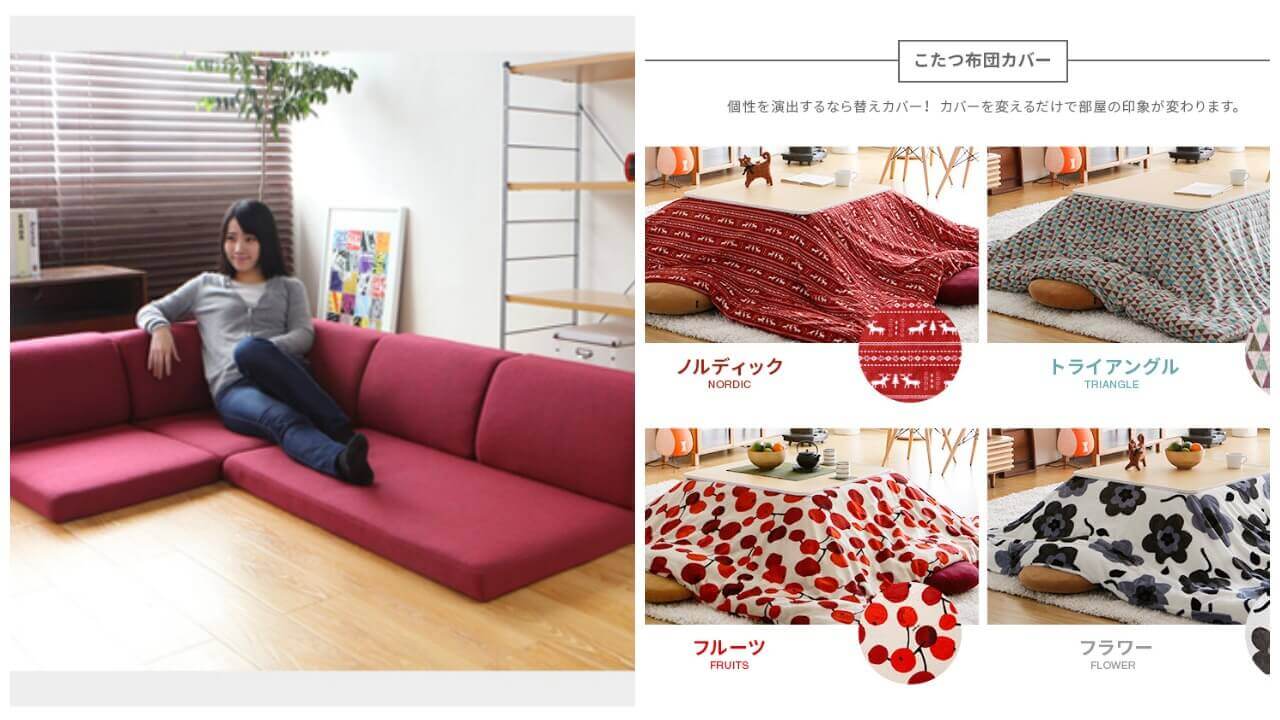
Not having furniture (and sleeping on a futon sometimes)
This is kind of my own fault, honestly. Perhaps the convenience of online shopping has spoiled me, but I really didn’t want to go to a furniture store and muddle my way through ordering things like a table or chairs. So far, I’ve basically either been sitting on the floor or on my futon when I hang around my apartment. This isn’t always terribly comfortable. Even just sleeping on a futon isn’t that great; if you sleep on your back, it’s not so bad, but they aren’t that fluffy, so when you lie on your side, your spine just makes a U-shape. I’m considering getting a bed, but I’ll wait and see how my other (online) furniture purchases go. (Hello, floor sofa and kotatsu!)
The milk
I don’t drink milk; at least, not straight. I used to when I was a kid, but somewhere along the way, chocolate milk reigned supreme, vastly superior over its natural state. My point is, I’m not sure what regular milk tastes like in America. In Japan, though, it has this “cheesy” taste to it. The first time I drank it, I could feel myself gagging a little. Cheese shouldn’t be liquid! My taste buds were not prepared for this new experience.
Unfortunately for me, every school lunch comes with milk, so I drink it 5 days out of the week. I will say that I’ve gotten used to it (for the most part). I just wish chocolate milk was a thing around here. There’s refrigerated cocoa, but…c’mon, that can’t really measure up. I tried adding chocolate syrup to milk once, but it still tasted kind of like cheese. Maybe I’ll try again with a different milk brand.
No insulation
It gets pretty chilly in the mornings now. Sleeping by the sliding glass door in my apartment probably doesn’t help, either. Japan is kind of a “self-insulating” country; the home goods store near my place has bubble wrap you can put on windows and different kinds of tape and foam to block off drafty doors. I haven’t gotten my electricity bill yet, but I’m not looking forward to it. It’s only October…
The time difference makes staying in touch hard
The time difference between New York and Japan is 14 hours (13 during Daylight Saving Time). Talking with my family during the week is impossible, so I only have the chance to do so on the weekend. Of course, I’m living in Japan, so I also want to use that time to explore and have fun. Keeping up with the other Yatta-Tachi staff members is also difficult; the time zones are even more varied. It takes a lot of effort to keep in touch with everyone, and there are days when I really miss talking to people from back home. All I can do is continue to try and make it work.
The “Surprising”

A number of stores don’t carry size S
People frequently mention that Japanese people are on the small side. While others have probably complained about the difficulties of finding large enough clothes, I thought this was my chance to finally find cute clothing in my size. I won’t mince words: I’m short. I wore hand-me-downs and large children’s clothing well into my high school years.
After college, I discovered websites that sold clothing from East Asia, and I was hooked. They were inexpensive, cute, and they actually fit me. So, I figured coming to Japan was like hitting the cute clothing jackpot. So, what have I found so far? There are quite a few stores that don’t have small sizes. They’ll have M, L, and LL (medium, large, and extra-large), but not small. I was floored.
Sure, in some respects, clothes are worn tighter in America than in Japan. But there’s no way that some of the girls around here are wearing M sized clothing; I’ve seen plenty of women who are thinner than me. I was able to find small legging pants at Uniqlo, one of my favorite Japanese clothing stores back in New York. However, I would buy XS clothes from there, and the stores in Japan don’t carry a lot of XS clothes (they’re online only). So, my small leggings bunch up at the bottom. The journey towards perfecting my Japanese sense of style continues.
Use of polite language isn’t as consistent as textbooks say, and situation can determine language, too
Textbooks that aim to teach Japanese also make sure to go over politeness levels and when to use what level (i.e. senior group members vs. peers vs. junior group members). What you end up taking from this is that certain levels of politeness are used statically: bosses will always use casual speech with their workers, and those workers will always speak as politely as humanly possible. It turns that this way of speaking isn’t as static as textbooks suggest.
To begin with, I don’t think I’ve heard any of the teachers use formal speech with the principal. Sometimes even the students use more casual speech towards him. Another thing is that people don’t stick with these levels all the time, even within one conversation. Sometimes they say things a little more politely, and then the next moment they’ll speak more casually. The general situation also has to be considered: the principal doesn’t use casual speech when he talks in front of the whole student body. Since it’s a more formal meeting than in the hallway, he moves up to the middle level of politeness. It makes using the language seem even more complex and confusing, but it highlights an important point: we don’t always speak formally with our superiors, and neither do Japanese people.
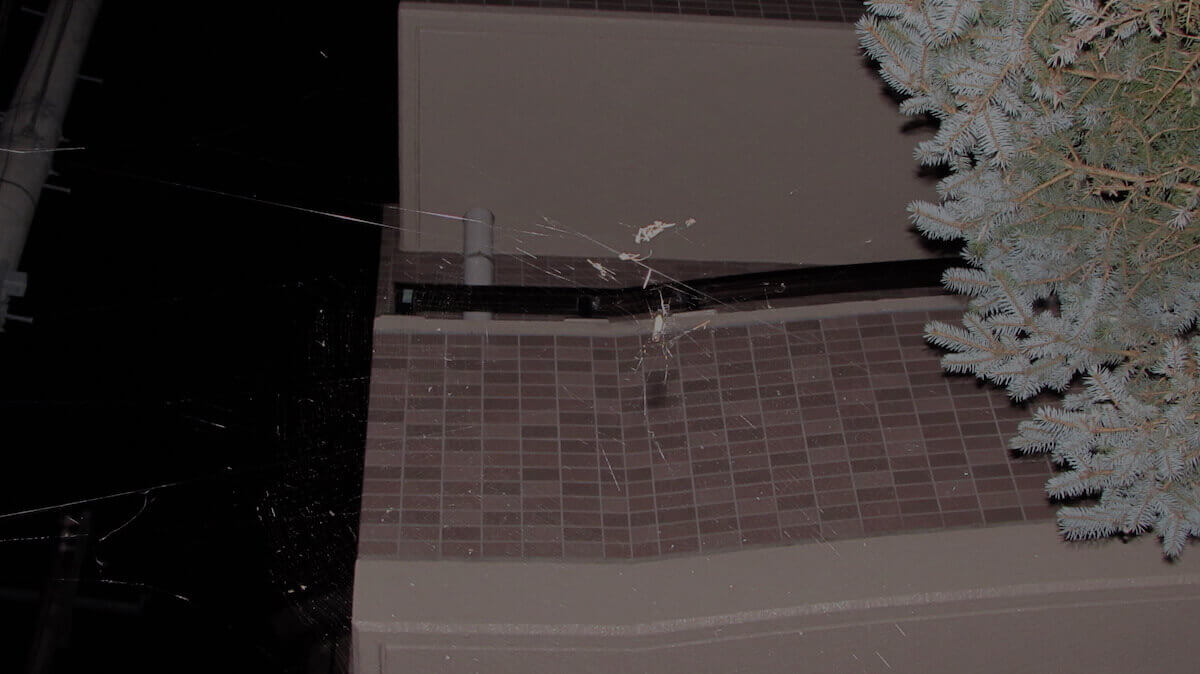
There are lots of spider webs with giant spiders
Simply put: I did not see this coming. You can pretty much find huge spider webs anywhere around here, with large spiders calling them their home.
School lunch is super filling (and freaking high in calories, yo)
As mentioned, people tend to think of Japanese people as being on the small side. People therefore assume that the portions are smaller here, too. You would be quite wrong, though. The school lunches are the most filling meals I’ve ever eaten in my life. I usually end up either not eating dinner or just having a light snack. And the calories! I was really shocked when I saw that all of the meals were way over 500 calories. After a while, I started taking home parts of each lunch, like bread or fruit. Nowadays I rarely eat everything that’s on my tray. I also started jogging again, just to make sure my weight doesn’t creep up on me.

Students wear sneakers to school and as room shoes
When you think of a Japanese student, what image do you get? Girls in blazers and short skirts, boys in those black jackets with high collars? Maybe they both wear different shoes outside and indoors? In media (like anime), school kids are shown wearing loafers as they walk to and from school, and Mary Jane-type shoes when they’re walking through the halls. In my junior high school, though, the students wear one pair of sneakers to school, and another pair inside.
I have seen some high schoolers wear loafers as they walk to school, and there are a number of elementary school kids who wear the Mary Jane-esque shoes inside the school, but when it comes to junior high (mine, anyway), they do neither. The girls also don’t roll their skirts. The length comes up to about the middle of their calves, so the skirts are actually quite long. They’ll also stay in their gym uniforms after P.E. class a lot of the time.
Playing music during lunch
This is so awesome! With all of the anime or movies I’ve seen that take place in Japanese schools, none of them have ever included this. I don’t know if all schools here do this, but that doesn’t make it any less cool. Every day, a handful of students enter the staff room and go into the room with the PA system. There, they play songs over the speaker from a number of different CDs. I’ve heard rock songs, classical music, and, yes, anime songs, too. I wonder if they’d play my CDs if I brought them in…
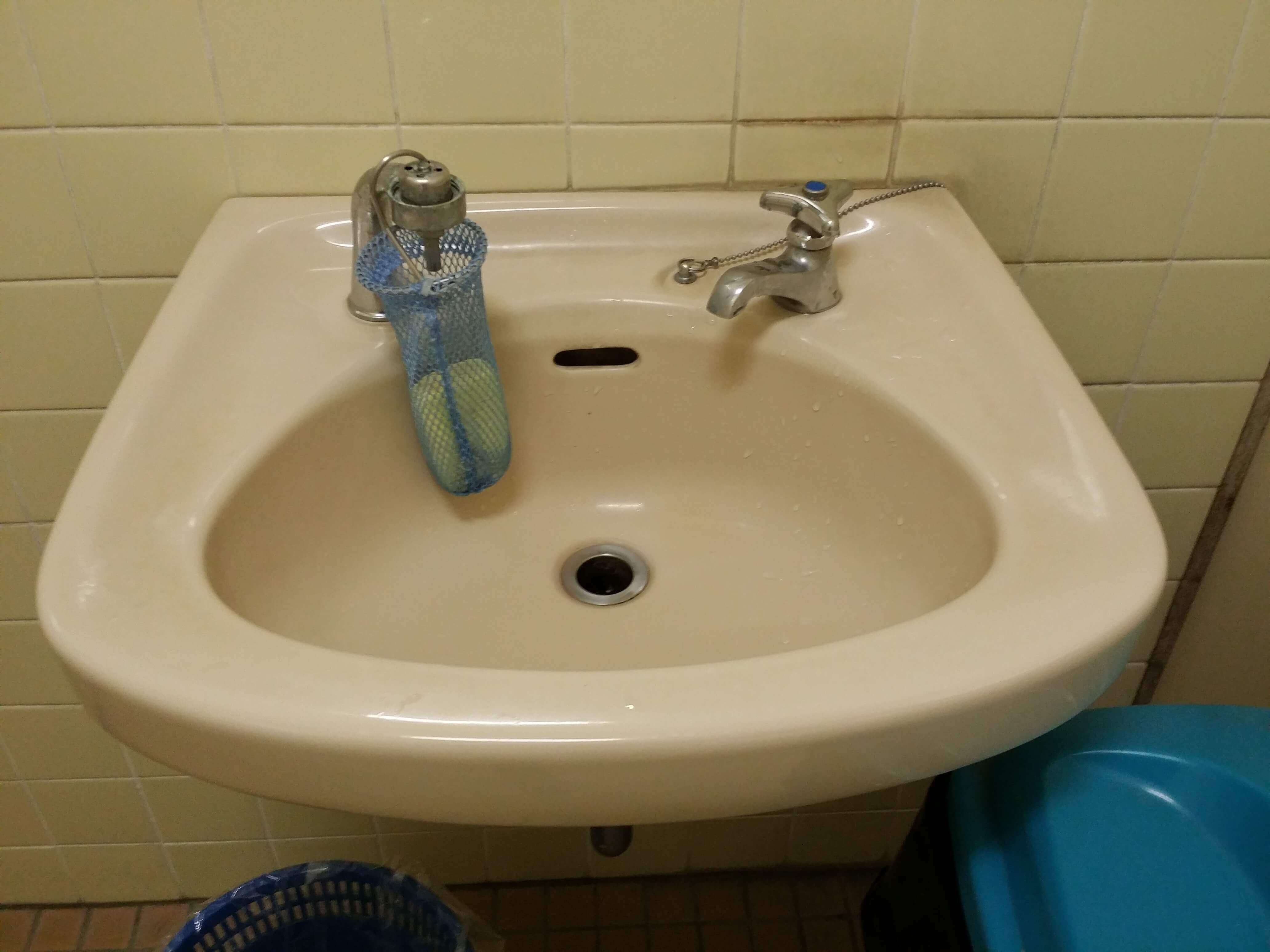
No hot water nozzle in the schools’ bathroom sinks
It’s going to be such a cold winter. Yup, another heat-related issue. As to why there isn’t a nozzle for hot water, I have no clue. I know water here is heated via gas. Maybe it’s to keep gas prices down? Depending on the company, gas might be pretty expensive. In any case, I better invest in some quality hand cream. I foresee my hands getting extremely dry.
Overall thoughts
I didn’t come to Japan thinking it would be paradise. Every country has its pros and cons. After all is said and done, I’m happy I took a risk and got on that plane. Life’s had its ups and downs, but living here is sure to be one of the best experiences of my life. I can’t wait to learn even more about what this country has to offer (and hopefully live a tad more comfortably in the process).
Are there any points you found surprising? What kind of articles about living in Japan do you want to read? Sound off in the comment section below!

Featured Sponsor - JAST
The sweetest romance and the darkest corruption, the biggest titles and the indie darlings; for visual novels and eroge, there's nowhere better.
Big thank you to our supporters
From their continous support, we are able to pay our team for their time and hard work on the site.
We have a Thank-You page dedicated to those who help us continue the work that we’ve been doing.
See our thank you page




